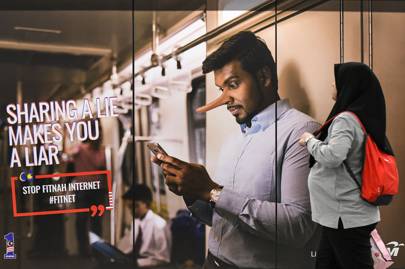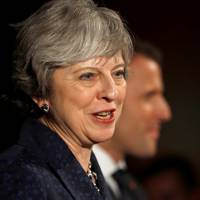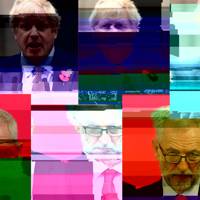
The crackdown on fake news by governments around the world is underway. As the Malaysian parliament is currently introducing a new law against misinformation, India has been forced to curtail its plans, and other countries are considering, or have decided, that the fight against propaganda and shoddy journalism can be done best using the law. Unfortunately, experts say, these efforts are short-sighted, or potentially malicious.
Fake news is not a new problem, just a new framework that can be taken advantage of by those with the intent and skills to do so. “The whole idea of fake news has been around pretty much forever,” says Paul Bernal, lecturer in information technology, intellectual property and media law at UEA's School of Law, “it goes back at least to the 15th century when Vlad the Impaler was the victim of fake news created by his enemies and spread using the methods of the time.”
Advertisement
Yet, despite its history, there's still no clear definition of what fake news is, or isn't. In developing its new law, the Malaysian government has defined fake news as “news, information, data and reports which is or are wholly or partly false”, which applies across all forms of media, and to producers and sharers both in and out of the country. The penalty for those disseminating fake news is a maximum fine of 500,000 ringgit (approximately £90,000) and up to six years in jail.
In India, prime minister Narendra Modi has dropped rules that would punish print and web journalists for spreading fake news 24 hours after the plan was announced. The retracted Indian law was less sweeping than in Malaysia and would have seen journalists lose their government accreditation for a period of time.
Read next
India's U-turn was prompted by media and human rights campaigners speaking out against the plans. “A government fiat restraining the fourth pillar of our democracy is not the solution,” the country's Press Club said in a statement.
Elsewhere, the UK has planned a "fake news unit" which will deter people from creating misinformation. In France, Emmanuel Macron is preparing a fake news team to tackle the spread of information around elections. During Macron's 2017 election campaign his email was hacked and it was claimed false information was added to the subsequently published documents. Germany's hate speech law, while not specifically covering fake news, has also been criticised for its implementation.
Advertisement

WIRED Opinion
Theresa May's fake news unit is just another naïve plan for the web
Many of these laws were introduced shortly in advance of election periods. But why have these laws started to appear now? “Many governments, even our government have been looking at ways to effectively control uncomfortable stories,” Bernal explains, “the fake news saga has been one that provides an opening for them to do this. It’s a Trojan horse.”
With the potential ability to imprison, bankrupt or put journalists out of business for publishing poorly defined misinformation, there is enormous scope for abuse, of which the worse case scenario would be outright government censorship, impinging on human rights and make people’s lives worse. Yet even without outright control of stories, there is also the risk of the chilling effect, where the press’ self-censorship to comply with the rules means that legitimate stories in the public interest are left unpublished for fear of potential consequence, as Yin Yin Lu, researcher at the Oxford Internet Institute, describes. “Not reporting something is as dangerous as reporting something that is false," she says. "This kind of legislation would disincentivise journalists from publishing the truth, if it was a story about a scandal for example.”
If a government is not the appropriate body to deal with misinformation, is there a better option? Lu believes that the best choice is allowing normal people to deal with fake news themselves, rather than letting the government take care of it for them. “Fake news laws are disempowering users. The top-down approach disempowers users, and further empowers people who already have power," she says. "I think the solution needs to be bottom-up, which is tied to the design of the social media platforms where the majority of news today is consumed. It should be the responsibility of the platforms to implement a design solution that would indicate visually the quality of news sources that were shared. This would allow users themselves to determine whether or not they should trust them.”
Since Donald Trump's popularisation of the term fake news during the 2016 presidential election, social media companies have belatedly made some steps to teach users about potential issues. Facebook has partnered with fact-checking organisations around the world and guidance for users has been produced.
Advertisement
This is not to say that nobody should have oversight, especially when it comes to media reports as the Malaysian and Indian laws largely focussed on. “The ideal solution is if the third party watchdogs already in place could monitor the quality of news from particular sources and collaborate with the platforms that disseminate news to communicate their findings,” Lu concludes.
The fact of the matter is that while there are other options to explore, and plenty of opportunity for the whole thing to go terribly wrong, this will not stop governments from trying to introduce fake news legislation anyway. Some of these may be targetted at the media and others may be more sweeping. "We can expect more of these laws and we must fight back against this kind of excuse to clamp down on free speech and uncomfortable speech for the government," says Bernal.
These laws may come from good intentions or sometimes more insidious ones, but what is certain is that they are not the right response to fake news. Governments around the world need to accept that they cannot legislate their way out of this problem without damaging the media as a whole, a key part of the society the laws are in theory meant to protect."This is a really big problem, but no-one has a good answer yet,” Bernal adds.




